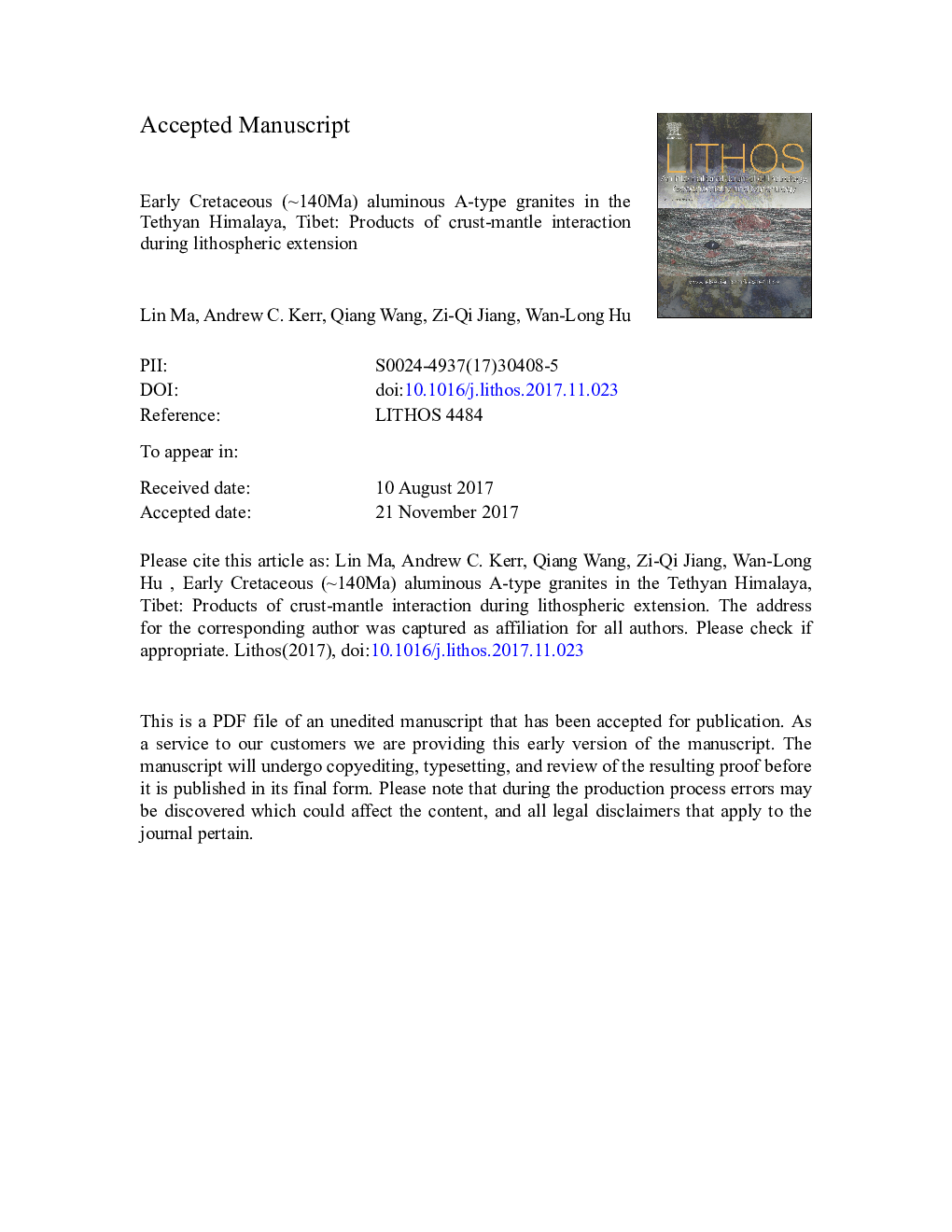| Article ID | Journal | Published Year | Pages | File Type |
|---|---|---|---|---|
| 8911761 | Lithos | 2018 | 37 Pages |
Abstract
A-type granites have been the focus of considerable research due to their distinctive major- and trace-element signatures and tectonic significance. However, their petrogenesis, magmatic source and tectonic setting remain controversial, particularly for aluminous A-type granites. The earliest Cretaceous (ca. 140 Ma) Comei granite in the eastern Tethyan Himalaya is associated with coeval oceanic island basalt (OIB)-type mafic lava, and has A-type granite geochemical characteristics including high 10,000 Ã Ga/Al (up to 6), FeOtotal/MgO (4.6-6.1) and (Na2O + K2O)/Al2O3 (0.50-0.61) ratios but low CaO (0.6-1.6 wt%) and Na2O (1.8-2.6 wt%) contents. The Comei granite also has variable peraluminous compositions (A/CNK = 1.00-1.36) along with zircon δ18O, εNd(t) and initial 87Sr/86Sr values of 8.2â° to 9.3â°, â 13.0 to â 12.4 and 0.7238 to 0.7295, respectively. This range of compositions can be interpreted as the interaction between high-temperature upwelling OIB type basaltic magmas and a shallow crustal (< 5 kbar) metapelitic source. The Comei granite and coeval OIB type basaltic rock could represent the earliest stage (145-140 Ma) of a large igneous event in eastern Tethyan Himalaya, which may well have been triggered by pre-breakup lithospheric extension prior to the arrival of the Kerguelen plume head.
Related Topics
Physical Sciences and Engineering
Earth and Planetary Sciences
Geochemistry and Petrology
Authors
Lin Ma, Andrew C. Kerr, Qiang Wang, Zi-Qi Jiang, Wan-Long Hu,
